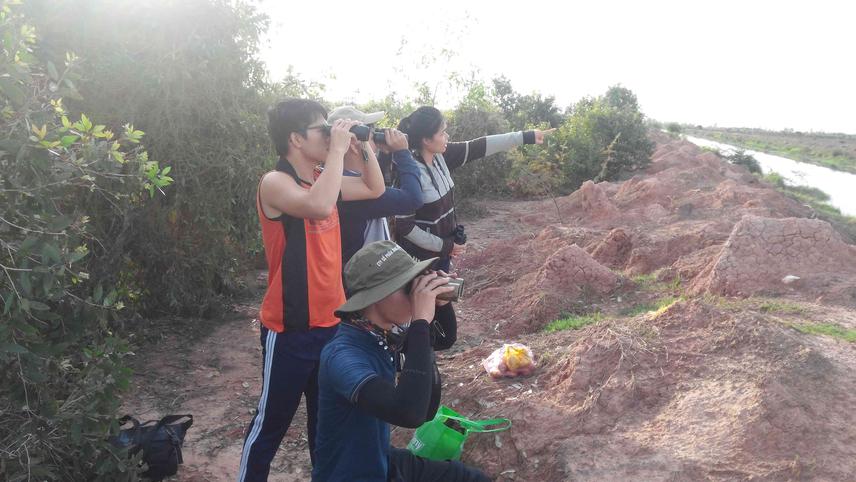Le Duy
To understand behaviour patterns and habitat uses by Eastern Sarus Crane in the Mekong delta and to improve capacity and raise awareness of local people toward the Eastern Sarus Crane
conservation .

Team for field sampling in Ha Tien Plain.
The Eastern Sarus Crane Grus antigone sharpii is one amongst three subspecies of Sarus Crane was previously widely distributed across South-East Asia but now restricted to parts of Cambodia and Vietnam in the lower Mekong basin, and is considered endangered due to its small population size, about 500-1000 individuals. Although this species is protected by law in Vietnam, human disturbance and habitat loss are major causes of this population decline within its range. Besides, the rediscovery of this species after the Vietnam War in the Mekong delta has poorly studies of that population ecology and habitat management. The unknown behavioural ecology, habitat requirements of this species and their severely threatened statuses make it imperative to carry out this research project to have valuable scientific insights and conservation contributions.
The project is the first study on both the behavioural ecology and habitat use of Eastern Sarus Crane in Vietnam, also in the world. The project has three major objectives to understand the population ecology and raising local people awareness for Eastern Sarus Crane conservation.
1) To understand behaviour patterns and the time budgets for the Eastern Sarus Crane during the non-breeding season in the Mekong delta, Vietnam.
2) Document present threats, data on the size and characterization of habitat used by the Eastern
Sarus Crane.
3) To improve capacity and raise awareness of local people toward the Eastern Sarus Crane conservation as well as developing local bird watching eco-tourism in the Mekong delta
The project targets two field sites as Tram Chim National Park and Ha Tien Plain. Data on the Eastern Sarus Cranes' behaviour by using scan animal sampling method. Environmental and Habitat structure such as water level, pH, plant composition and vegetation cover will be collected at the Crane’s locations. Moreover, improve local people awareness and building capacity on Crane research and conservation via training courses.
The results of the project will give ornithologists understand how a Crane’s behaviour is adapted to the environment in which it lives during the non-breeding season. Knowledge on habitat structure will not only help ornithologists building models on the distribution of Eastern Sarus Crane between breeding and non-breeding areas but also help conservationists develop programs for rehabilitating and reconstructing the habitat of this species. Through training activities, the project will great ways to build capacity and raining awareness of local people about Crane research and conservation in the Mekong delta.